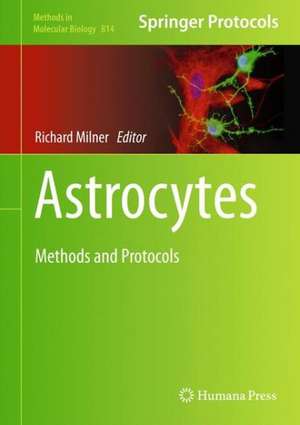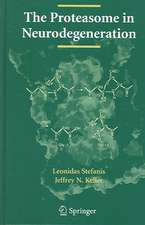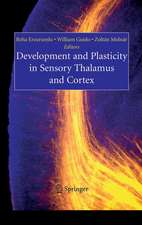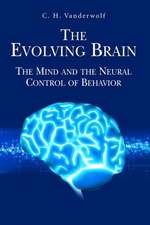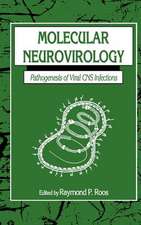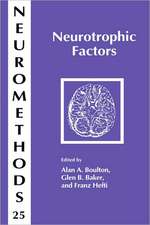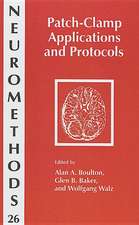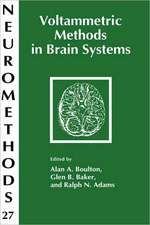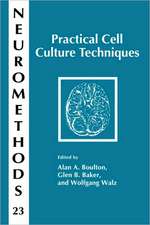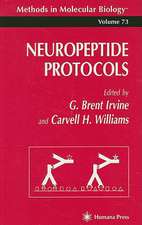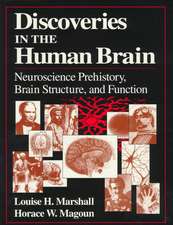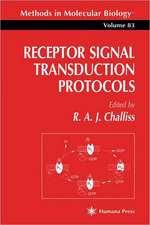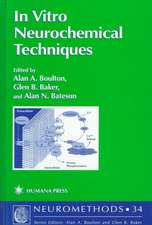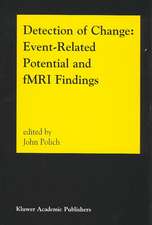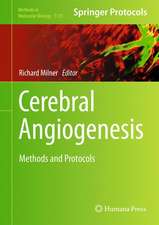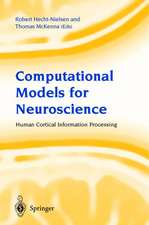Astrocytes: Methods and Protocols: Methods in Molecular Biology, cartea 814
Editat de Richard Milneren Limba Engleză Hardback – 6 dec 2011
| Toate formatele și edițiile | Preț | Express |
|---|---|---|
| Paperback (1) | 1014.28 lei 6-8 săpt. | |
| Humana Press Inc. – 23 aug 2016 | 1014.28 lei 6-8 săpt. | |
| Hardback (1) | 1244.08 lei 6-8 săpt. | |
| Humana Press Inc. – 6 dec 2011 | 1244.08 lei 6-8 săpt. |
Din seria Methods in Molecular Biology
- 9%
 Preț: 791.59 lei
Preț: 791.59 lei - 23%
 Preț: 598.56 lei
Preț: 598.56 lei - 20%
 Preț: 882.95 lei
Preț: 882.95 lei -
 Preț: 252.04 lei
Preț: 252.04 lei - 5%
 Preț: 729.61 lei
Preț: 729.61 lei - 5%
 Preț: 731.43 lei
Preț: 731.43 lei - 5%
 Preț: 741.30 lei
Preț: 741.30 lei - 5%
 Preț: 747.16 lei
Preț: 747.16 lei - 15%
 Preț: 663.45 lei
Preț: 663.45 lei - 18%
 Preț: 1025.34 lei
Preț: 1025.34 lei - 5%
 Preț: 734.57 lei
Preț: 734.57 lei - 18%
 Preț: 914.20 lei
Preț: 914.20 lei - 15%
 Preț: 664.61 lei
Preț: 664.61 lei - 15%
 Preț: 654.12 lei
Preț: 654.12 lei - 18%
 Preț: 1414.74 lei
Preț: 1414.74 lei - 5%
 Preț: 742.60 lei
Preț: 742.60 lei - 20%
 Preț: 821.63 lei
Preț: 821.63 lei - 18%
 Preț: 972.30 lei
Preț: 972.30 lei - 15%
 Preț: 660.49 lei
Preț: 660.49 lei - 5%
 Preț: 738.41 lei
Preț: 738.41 lei - 18%
 Preț: 984.92 lei
Preț: 984.92 lei - 5%
 Preț: 733.29 lei
Preț: 733.29 lei -
 Preț: 392.58 lei
Preț: 392.58 lei - 5%
 Preț: 746.26 lei
Preț: 746.26 lei - 18%
 Preț: 962.66 lei
Preț: 962.66 lei - 23%
 Preț: 860.21 lei
Preț: 860.21 lei - 15%
 Preț: 652.64 lei
Preț: 652.64 lei - 5%
 Preț: 1055.50 lei
Preț: 1055.50 lei - 23%
 Preț: 883.85 lei
Preț: 883.85 lei - 19%
 Preț: 491.88 lei
Preț: 491.88 lei - 5%
 Preț: 1038.84 lei
Preț: 1038.84 lei - 5%
 Preț: 524.15 lei
Preț: 524.15 lei - 18%
 Preț: 2122.34 lei
Preț: 2122.34 lei - 5%
 Preț: 1299.23 lei
Preț: 1299.23 lei - 5%
 Preț: 1339.10 lei
Preț: 1339.10 lei - 18%
 Preț: 1390.26 lei
Preț: 1390.26 lei - 18%
 Preț: 1395.63 lei
Preț: 1395.63 lei - 18%
 Preț: 1129.65 lei
Preț: 1129.65 lei - 18%
 Preț: 1408.26 lei
Preț: 1408.26 lei - 18%
 Preț: 1124.92 lei
Preț: 1124.92 lei - 18%
 Preț: 966.27 lei
Preț: 966.27 lei - 5%
 Preț: 1299.99 lei
Preț: 1299.99 lei - 5%
 Preț: 1108.51 lei
Preț: 1108.51 lei - 5%
 Preț: 983.72 lei
Preț: 983.72 lei - 5%
 Preț: 728.16 lei
Preț: 728.16 lei - 18%
 Preț: 1118.62 lei
Preț: 1118.62 lei - 18%
 Preț: 955.25 lei
Preț: 955.25 lei - 5%
 Preț: 1035.60 lei
Preț: 1035.60 lei - 18%
 Preț: 1400.35 lei
Preț: 1400.35 lei - 20%
 Preț: 817.30 lei
Preț: 817.30 lei
Preț: 1244.08 lei
Preț vechi: 1517.18 lei
-18% Nou
Puncte Express: 1866
Preț estimativ în valută:
238.12€ • 247.65$ • 199.54£
238.12€ • 247.65$ • 199.54£
Carte tipărită la comandă
Livrare economică 14-28 martie
Preluare comenzi: 021 569.72.76
Specificații
ISBN-13: 9781617794513
ISBN-10: 1617794511
Pagini: 592
Ilustrații: XIV, 575 p.
Dimensiuni: 178 x 254 x 37 mm
Greutate: 1.2 kg
Ediția:2012
Editura: Humana Press Inc.
Colecția Humana
Seria Methods in Molecular Biology
Locul publicării:Totowa, NJ, United States
ISBN-10: 1617794511
Pagini: 592
Ilustrații: XIV, 575 p.
Dimensiuni: 178 x 254 x 37 mm
Greutate: 1.2 kg
Ediția:2012
Editura: Humana Press Inc.
Colecția Humana
Seria Methods in Molecular Biology
Locul publicării:Totowa, NJ, United States
Public țintă
Professional/practitionerCuprins
Astrocytes: Multi-talented Stars of the Central Nervous System.-Neurogenic Astrocytes and their Glycoconjugates: not just “Glue” Anymore.- Heterogeneity of Astrocytic Form and Function.-Preparation of Mixed Glial Cultures from Postnatal Rat Brain.-Generation of Primary Astrocyte Cultures Devoid of Contaminating Microglia.-Derivation of Microglia-free Astrocyte Cultures from Neural Stem Cells.-Isolation and Culture of Spinal Cord Astrocytes.-Isolation and Culture of Astrocytes from the Retina and Optic Nerve.-Primary Cultures of Astrocytes from Fetal Bovine Brain.-Isolation and Cultivation of Porcine Astrocyte.- Isolation and Culture of Human Astrocytes.-Cell Culturing of C. elegans Glial Cells for the Assessment of Cytosolic Ca2+ Dynamics.-Astrocyte Polarization and Wound Healing in Culture:Studying Cell Adhesion Molecules.-An in Vitro Trauma Model to Study Rodent and Human Astrocyte Reactivity.-Use of Gel Zymography to Examine Matrix Metalloproteinase (gelatinase) Expression in Brain Tissue or in Primary Glial Cultures.-ELISA Methodology to Quantify Astrocyte Production of Cytokines/Chemokines In Vitro.-Induction of Nitric Oxide Synthase-2 Expression and Measurement of Nitric Oxide Production in Enriched Primary Cortical Astrocyte Cultures.-Examining Potassium Channel Function in Astrocytes.-Connexin Based Channels in Astrocytes: How to Study their Properties.-Isotope-based Quantitation of Uptake, Release and Metabolism of Glutamate and Glucose in Cultured Astrocytes.-An in Vitro Model of Reactive Astrogliosis and its Effect on Neuronal Growth.-A Neuron-Astrocyte Co-Culture System to Investigate Astrocyte Secreted Factors in Mouse Neuronal Development.-Co-cultures of Neurons and Astrocytes as a Model for Examining Hypoxia-induced Neuronal Death.-Use of Astrocyte-Microglial Co-cultures to Examine the Regulatory Influence of Astrocytes on Microglial Activation.-Astrocyte-Schwann Cell Co-Culture Systems.-An in Vitro Assay to ExamineOligodendrocyte Precursor Cell Migration on Astrocytes.-Investigation of Astrocyte-Oligodendrocyte Interactions in Human Cultures.-An Improved in vitro Blood-Brain Barrier Model: Rat Brain Endothelial Cells Co-Cultured with Astrocytes.-In Vitro Models of the Blood-Brain Barrier.-An in Vitro Model of Ischemic Stroke.-Pericyte Co-Culture Models to Study Astrocyte, Pericyte, and Endothelial Cell Interactions.-Reprogramming of Postnatal Astroglia of the Mouse Neocortex into Functional Synapse-Forming Neurons.-Assessment of Glial Function in the in Vivo Retina.-Imaging in Vivo Astrocyte/Endothelial Cell Interactions at the Blood-Brain Barrier.-Transgenic Techniques for Cell Ablation or Molecular Deletion to Investigate Functions of Astrocytes and Other GFAP-Expressing Cell Types.-Use of Cre-Lox technology to analyze integrin functions in astrocytes.-In Vivo Imaging of Ca2+ Signaling in Astrocytes Using Two Photon Laser Scanning Fluorescent Microscopy.
Textul de pe ultima copertă
Ever since their discovery more than 150 years ago, astrocytes have proved to be something of an enigma. Only in the last 10-15 years has it become clear that astrocytes are multifunctional versatile cells that play key roles in a multitude of diverse processes in the CNS. Astrocytes: Methods and Protocols provides scientists with a comprehensive guide to many techniques used for astrocyte cell culture, as well as more specialized approaches for studying astrocyte functions, both in vitro and in vivo. Key cellular, molecular and biochemical techniques are used to study the many and varied functions of this fascinating cell. Written in the highly successful Methods in Molecular Biology™ series format, chapters include introductions to their respective topics, lists of the necessary materials and reagents, step-by-step, readily reproducible laboratory protocols, and key tips on troubleshooting and avoiding known pitfalls.
Authoritative and practical Astrocytes: Methods and Protocols seeks to aid scientists and researchers looking to use more specialized techniques to examine astrocyte function.
Authoritative and practical Astrocytes: Methods and Protocols seeks to aid scientists and researchers looking to use more specialized techniques to examine astrocyte function.
Caracteristici
Provides a selection of the key cellular,molecular, and biochemical techniques that are used in studying the many and varied functions of this fascinating cell Provides step-by-step detail essential for reproducible results Contains key notes and implementation advice from the experts
